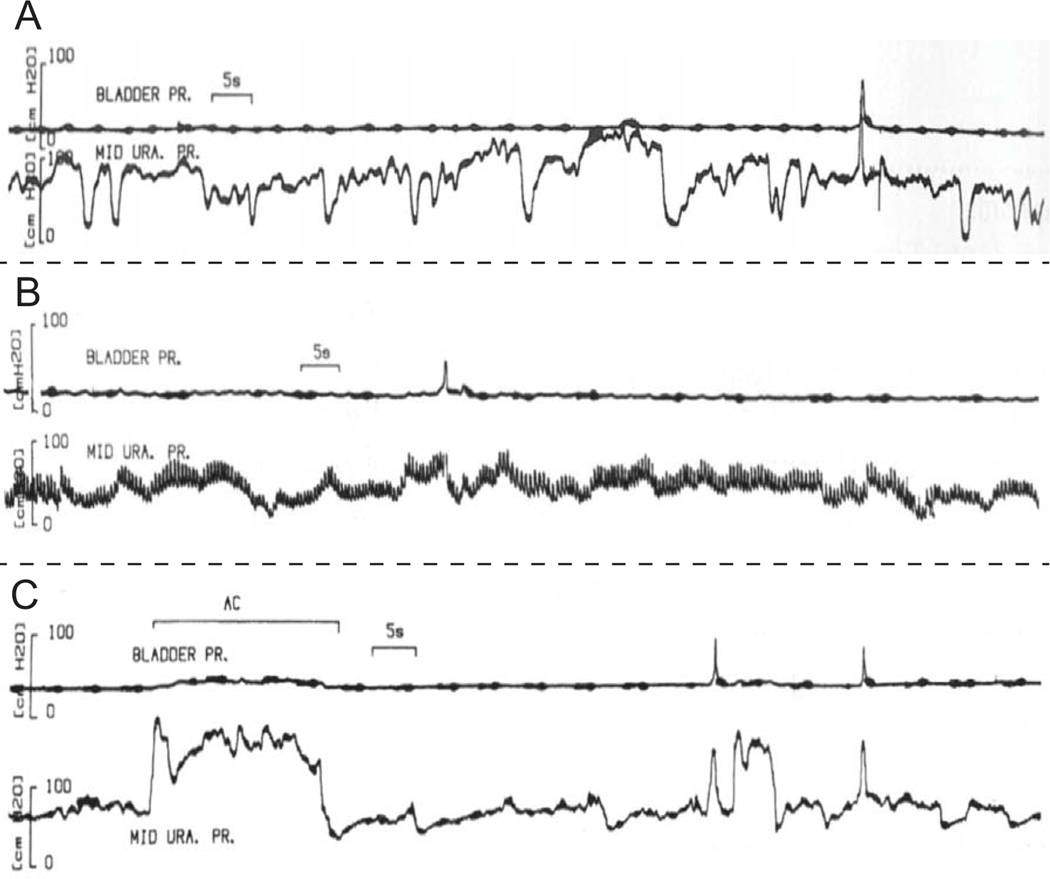Figure 4:
Examples (A)(B)(C) of different types of urethral instability as classified by the author (17)(reproduced with permission). Similar to detrusor overactivity, variation in the way these signals present themselves, and difficulty in describing the signals, makes it difficult to understand the importance of these signals as there is potentially a large amount of interpretation and information filtering being done by the authors. We argue that one path forward in improving our understanding of these signals is to share them electronically, so that computer algorithms can be created to consistently evaluate these signals across multiple studies. Secondly, once that has been accomplished, we need to relate quantification of these signals to treatment outcomes and symptoms. In other words, rather than worrying about defining an arbitrary threshold (of pressure change), we can begin to examine questions like, “How does a subject’s response to treatment vary as a function of the magnitude and frequency of urethral instability?” (along with any other parameters we measure – refer back to importance of multiple measurements in Figure 3).

